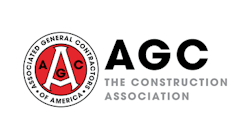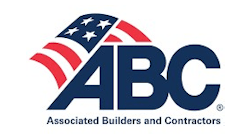For more than three decades, entrepreneur and equipment operator Chris Coleman has worked around the inland waterways of Virginia and North Carolina, building waterfront structures and providing other marine construction services. He built his first company into a substantial enterprise, sold it, retired, and then got back into the business in a different location—and with some new ideas on how to succeed in this competitive industry.
Always one to think outside the box, Coleman looked at different ways of using heavy construction equipment in order to improve efficiency and his profit potential.
A grapple attachment adds versatility.
For 20 years Coleman owned a marine construction company in Virginia with more than 200 employees at one time. A year and a half after he sold the firm and retired, he was itching to get back in the business. He moved to North Carolina and in 2004 started Carolina Marine Structures Inc. located in Kill Devil Hills (population 6,827).
“My first company got so big that I was not even seeing my projects being built,” he says. “I was sitting behind a desk, putting out fires, and dealing with problems. This time around I wanted to run the business on my terms. I wanted to be out in the field operating machinery, doing the building, and teaching my employees how to do these jobs properly.”
Coleman surveyed the landscape and decided the coastal area had a need for his specialty services, including dredging, bridge and culvert projects, boat ramps, bulkhead piers, and other water-related types of work. He started with zero clients and built a 15-employee organization that is now the largest marine contractor on the outer banks.
Some of his recent projects are indicative of how he has changed his approach to using equipment, including the difference-making ability of a pair of super-long-reach (SLR) Doosan crawler excavators.
Excavators Replace Cranes on Culvert Projects
Coleman previously owned several large cranes for use on culvert jobs. Today, crawler excavators are the replacement machine of choice.
“The city of Chesapeake, Virginia, hired us to install a bridge culvert, and instead of having an expensive crane onsite the entire time, we put an excavator on each side of the existing bridge for all our coffer dam work, excavation, and bottom prep,” he says. “Other firms would most likely have estimated the job using a crane the entire time, waiting to use it a few times during a 100-day rental. We got by with renting a crane for 15 hours to set the 20-ton box culverts. I got it—and the expense—out of my hair as fast as I could. We were able to do most of our lifts with the excavator. When a job was a little too heavy for one, we used both of them working together to swing the precast concrete panels in place. These excavators are the real deal.”
The economics of using the excavators, says Coleman, makes the decision easy.
“If you take the operators out of the equation, I can put two excavators on the job for $400 a day,” he reports. “The crane costs $800 a day. Even if I have the crane onsite, I still need one excavator to do a lot of the work that the crane is unable to do. So, I am really adding only one additional excavator when I have two on the job. This is just a single example of how the two excavators make me money.”
Another job—the boardwalk extension in the Rudee Inlet marina district of Virginia Beach, VA—was a clear example of the value of having an SLR excavator.
“After building a new concrete boardwalk out to the ocean along the jetty system and installing a guardrail, we had to place 1,000-pound boulders in the water,” says Coleman, whose company was the general contractor. “We positioned the excavator in the road, picked up the boulders with a grapple attachment, and reached over the boardwalk and guardrail to place them. Without the 50 feet [and] 1 inch of reach, this would have been impossible.”
Productive Dredging Machines
Dredging is another important specialty where Carolina Marine Structures uses its two Doosan DX225LC SLR excavators. The 167-horsepower crawler excavators weigh approximately 26 metric tons and have a maximum reach of 50 feet and 1 inch. Both werepurchased from Coleman’s local heavy equipment dealer, H&E Equipment Services, in Chesapeake, VA. In most cases one will be on a barge out in the channel and will be using a grading bucket to dig in the water. The other will be on an off-loading platform dumping material into trucks. Scow barges—flat-bottomed boats often used to haul bulk freight—go back and forth between the two machines.
Coleman first used the excavators on the Crab Creek dredging project in Virginia Beach. The company had to dig down to an elevation below a level that had been dredged over the years. The sand was extremely dense because it had never been mechanically disturbed.
“We began using a rented excavator and quickly discovered that the machine could not penetrate the sand at the lower elevation,” says Coleman. “I started digging with the new excavator and immediately began to exceed our estimated production rate.”
Managing time is one of the two most important factors in being successful in the dredging business, according to Coleman.
“That means you cannot afford an equipment breakdown,” he says. “Nothing is going to happen if you lose the ability to dig. You have four or five barges, two excavators, several dump trucks, and boats sitting idle. A dependable excavator that keeps digging is a must.”
The Other Critical Factor Is Accuracy
“This is not an exact science, so you have to work within your digging prism, which can vary from 6 inches to 2 feet,” says Coleman. “If you do not hit your mark and over-dig, you are wasting time, effort, and energy transporting material that you are not going to get paid for. Using your excavator for accurate digging is a key to making money.”
After completing the Crab Creek job, Coleman used his SLR excavators at the Virginia Institute of Marine Science research campus, located in Gloucester Point, VA. The Virginia Institute of Marine Science is one of the largest marine research and education centers in the United States.
“The work environment was tough—freezing cold in the middle of winter,” he says. “We often began the day with the temperature around 20 degrees Fahrenheit on the waterfront. The excavators proved to be very dependable, and the comfortable cab with heated seats was great.”
Coleman may be the owner of the company, but when it comes to operating and evaluating equipment, he knows what he’s talking about through experience (at least 600 hours in the excavators).
“I would rather be in the field than anywhere else,” he says. “That allows me to be the quality control guy on every job, and I think that really helps build the business. Plus, I’ve run all our equipment and think I am the best operator.”










